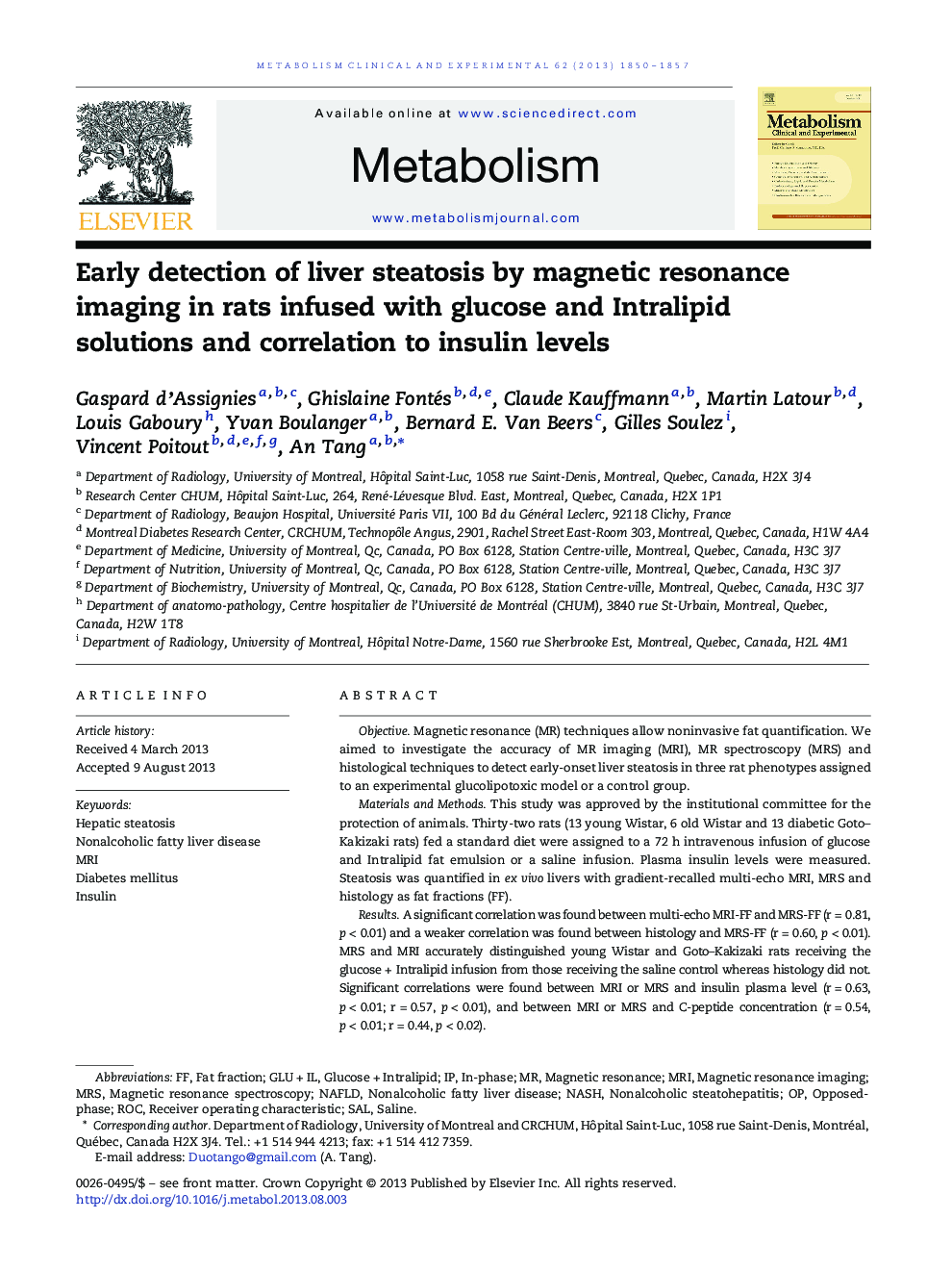| Article ID | Journal | Published Year | Pages | File Type |
|---|---|---|---|---|
| 2805705 | Metabolism | 2013 | 8 Pages |
ObjectiveMagnetic resonance (MR) techniques allow noninvasive fat quantification. We aimed to investigate the accuracy of MR imaging (MRI), MR spectroscopy (MRS) and histological techniques to detect early-onset liver steatosis in three rat phenotypes assigned to an experimental glucolipotoxic model or a control group.Materials and MethodsThis study was approved by the institutional committee for the protection of animals. Thirty-two rats (13 young Wistar, 6 old Wistar and 13 diabetic Goto–Kakizaki rats) fed a standard diet were assigned to a 72 h intravenous infusion of glucose and Intralipid fat emulsion or a saline infusion. Plasma insulin levels were measured. Steatosis was quantified in ex vivo livers with gradient-recalled multi-echo MRI, MRS and histology as fat fractions (FF).ResultsA significant correlation was found between multi-echo MRI-FF and MRS-FF (r = 0.81, p < 0.01) and a weaker correlation was found between histology and MRS-FF (r = 0.60, p < 0.01). MRS and MRI accurately distinguished young Wistar and Goto–Kakizaki rats receiving the glucose + Intralipid infusion from those receiving the saline control whereas histology did not. Significant correlations were found between MRI or MRS and insulin plasma level (r = 0.63, p < 0.01; r = 0.57, p < 0.01), and between MRI or MRS and C-peptide concentration (r = 0.54, p < 0.01; r = 0.44, p < 0.02).ConclusionsMulti-echo MRI and MRS may be more sensitive to measure early-onset liver steatosis than histology in an experimental glucolipotoxic rat model.
